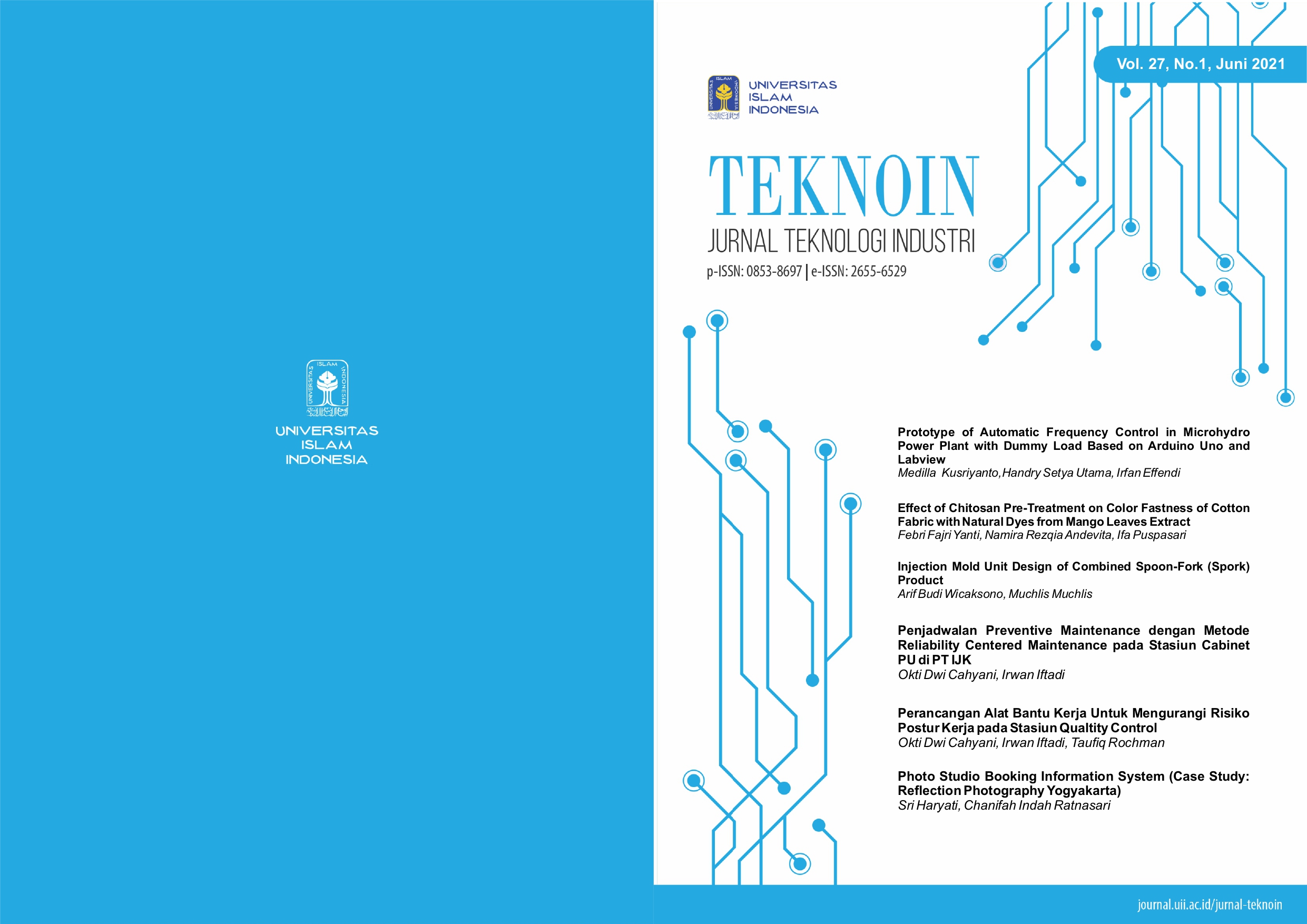Main Article Content
Abstract
Application of natural dyes in textile coloring has been widely used because it is more environmentally friendly than synthetic dyes and is able to produce various colors from one natural dye. In this study, cotton fabric was treated with chitosan at different concentrations (0, 0.25%, 0.5%, and 1%) to determine its effect on the color fastness using mango leaves extract as natural dyes. Fastness to ironing, washing and sun drying of chitosan-treated samples were measured and compared with untreated samples. The effect of using different types of mordants (ferrous sulphate and alum) was also investigated. Coloring of the dyed fabric was evaluated in terms of color parameters (L* a* b*) and the dye absorption was evaluated using K/S values. The results showed that the color fastness to wet and dry rubbing at each concentrations of chitosan and different types of mordants were good. However, the fabric processed with ferrous sulphate has a lower value of color fastness to ironing than that with alum. The color fastness to washing showed quite good results. The color fastness to sun drying showed that the cotton fabric with or without pre-treatment with chitosan showed good results. However, the value of fabric processed with ferrous sulphate showed very good values compared to alum. High values of K/S were obtained on fabrics pre-treated with chitosan for all types of mordants. Fabric processed with alum showed high color brightness.
Keywords
mango leaves
extraction
cotton fabric
chitosan
mordant
natural dye
Article Details
License
Authors who publish with this journal agree to the following terms:
- Authors retain copyright and grant the journal right of first publication with the work simultaneously licensed under a Creative Commons Attribution License that allows others to share the work with an acknowledgement of the work's authorship and initial publication in this journal.
- Authors are able to enter into separate, additional contractual arrangements for the non-exclusive distribution of the journal's published version of the work (e.g., post it to an institutional repository or publish it in a book), with an acknowledgement of its initial publication in this journal.
- Authors are permitted and encouraged to post their work online (e.g., in institutional repositories or on their website) prior to and during the submission process, as it can lead to productive exchanges, as well as earlier and greater citation of published work (See The Effect of Open Access).
